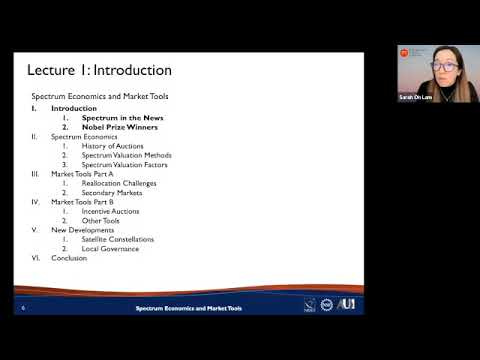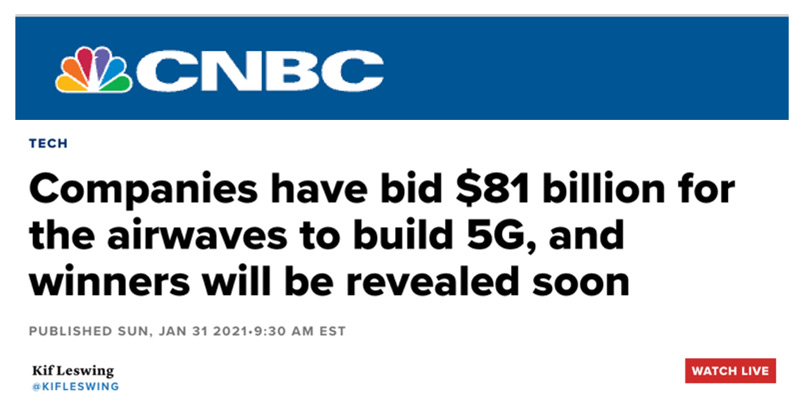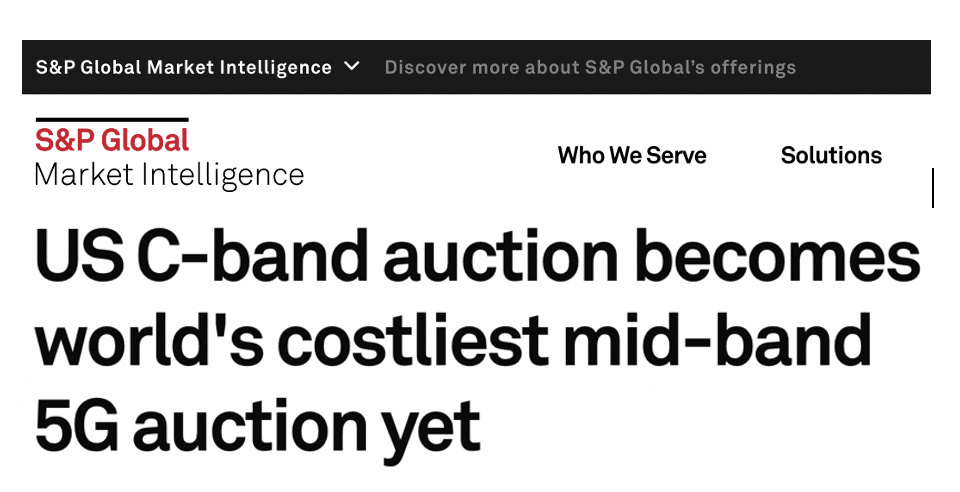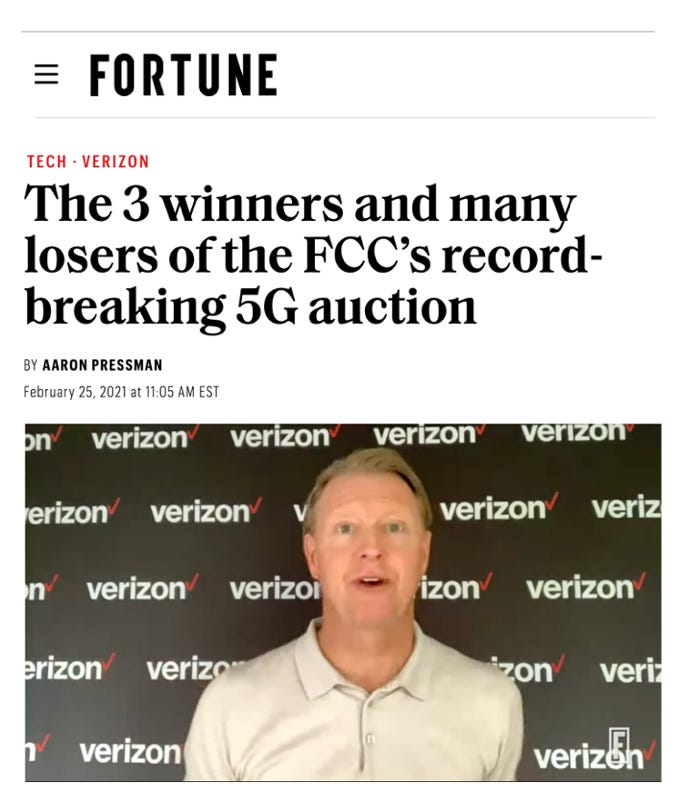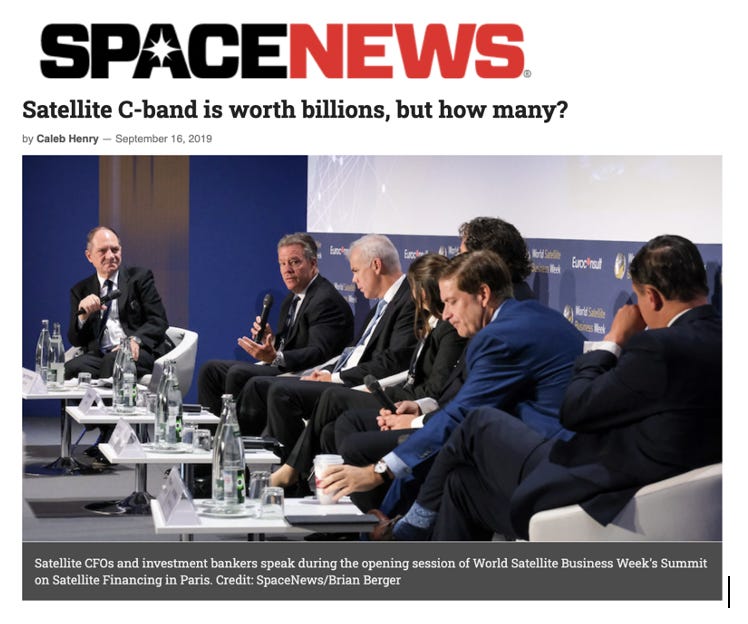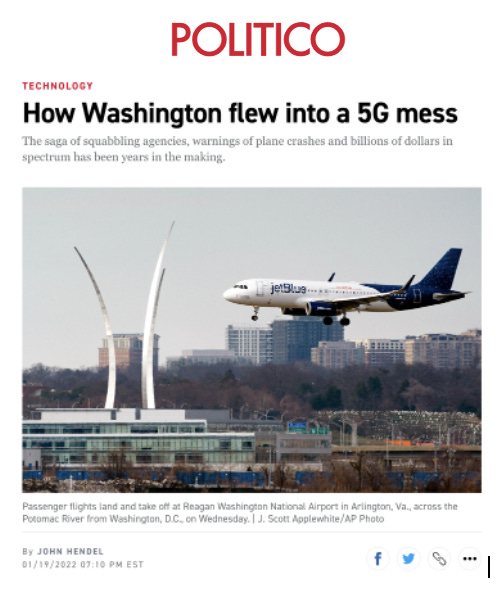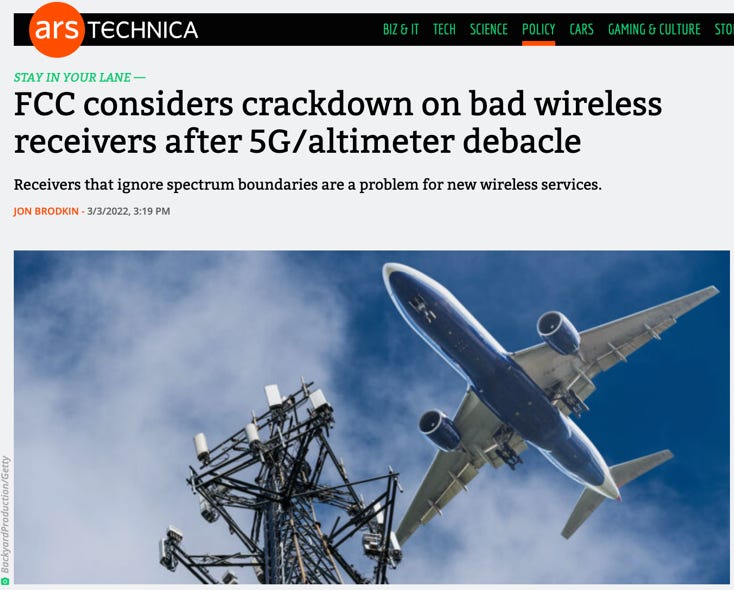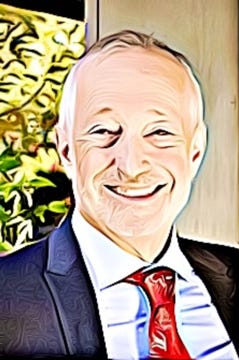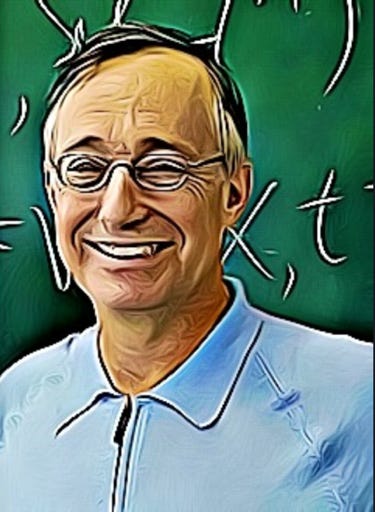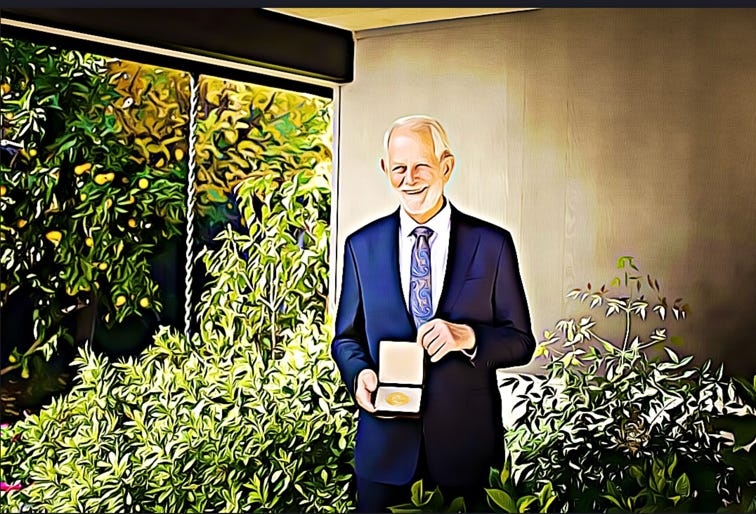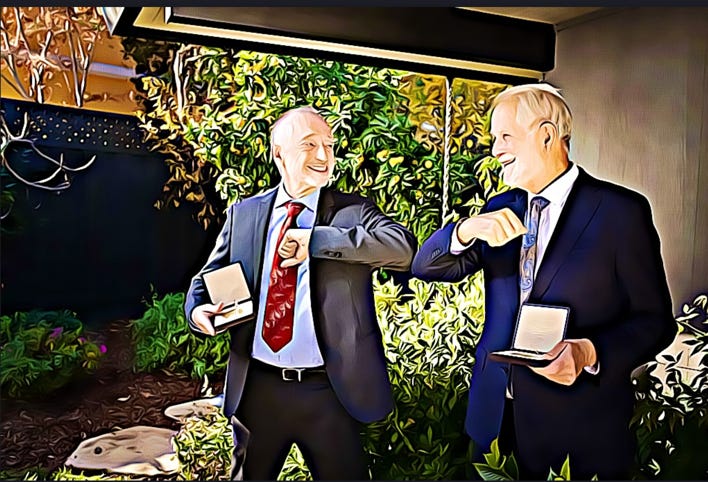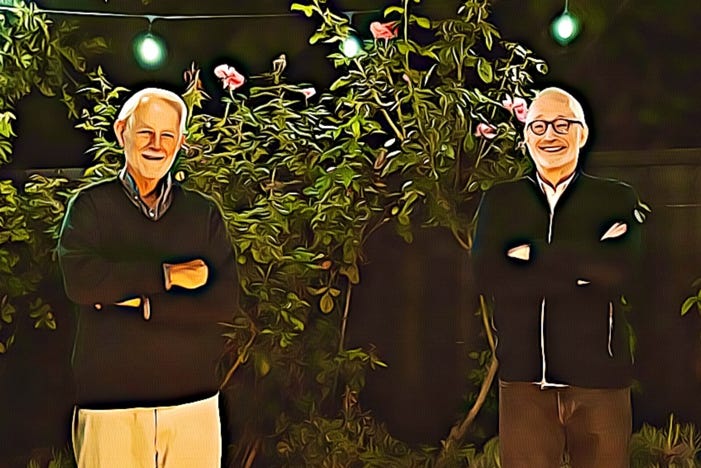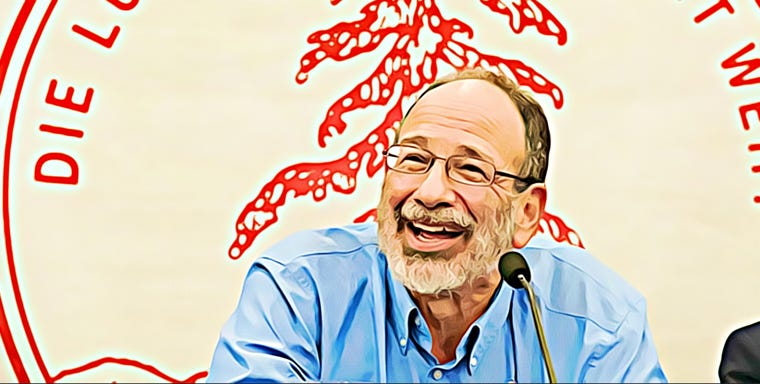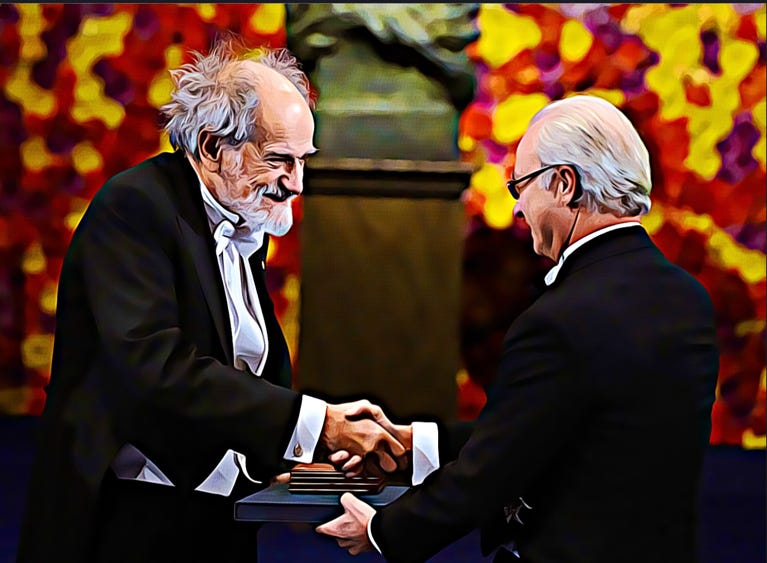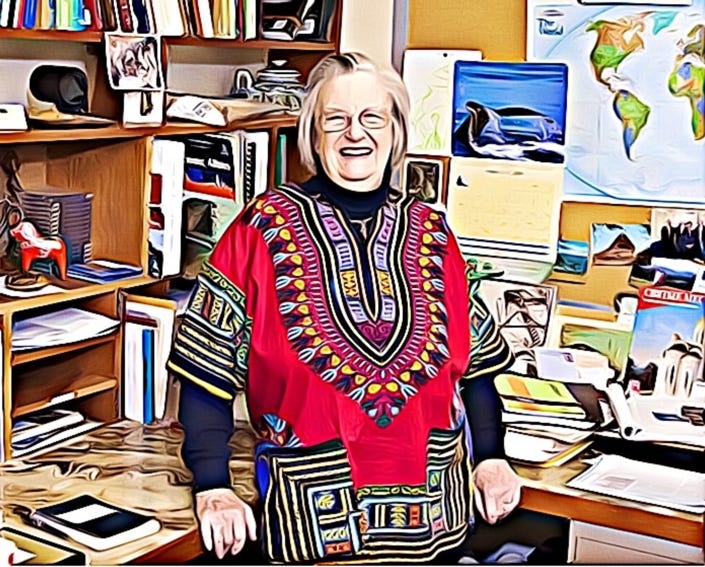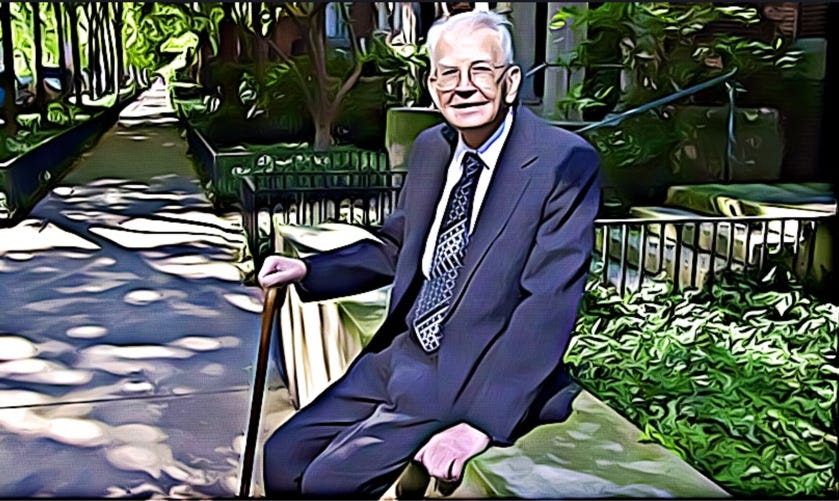Lecture 1: Intro to Spectrum Economics and Market Tools
Spectrum Economics Primer - video series
Course Materials
Introduction to Spectrum Economics and Market Tools
An introduction to spectrum economics and market tools begins with a discussion of current events and news headlines. In this introduction, we review a few recent events through news headlines that provide a spotlight on important features of spectrum economics and market tools of interest.
Next, students of spectrum economics may find that an accessible way to learn about the more challenging areas of policy development is to first start with an overview of notable economists who have been recognized for contributions and advances in the understanding of spectrum policy. Innovations such as auctions, secondary markets, unlicensed bands, and experimental licenses have been implemented in part due to the work of these scholars and researchers.
Spectrum in the News
C-Band Auction and Satellite Relocations
The Federal Communications Commission held a spectrum auction for “C-Band” spectrum that amounted to $81.11 billion in auction proceeds, with $45.45 billion from Verizon’s Cellco Partnership, $23.41 billion from AT&T, and $9.34 billion from T-Mobile in February 2021.
Figure 1. Headline on C-Band Auction
The C-Band auction, or Auction 107, had an average price of $0.94 per MHz/pop for the parcels of spectrum rights across the United States. The C-Band is a spectrum band from 3.7 GHz to 4.2 GHz which is considered mid-band 5G spectrum which is used around the world in at least 58 markets for 5G service.
Figure 2. Headline on C-Band Auction
The spectrum is low enough on the frequency dial for communications to travel long distances with the benefit of being wide enough for download speeds. The auction was well subscribed, with 97 rounds of bidding, and total proceeds higher than the range that was anticipated from prior auctions. The auction design had a first phase and second phase, where the bidders bid how much spectrum that would want followed by specific blocks and regions of assignments.
Figure 3. Headline on C-Band Auction
The C-Band auction also includes a relocation component where satellite operators are compensated for clearing out of the bands. In an FCC proceeding prior t
o the auction, satellite operators negotiated and agreed to clear out a portion of the C-Band in exchange for monetary compensation of $13 billion. To relocate satellite operations, Intelsat and SES ordered 13 new satellites in 2020 and Eutelsat and Telesat moved operations to existing fleets.
Figure 4. Headline on Satellite Talks Prior to C-Band Auction
The satellite industry negotiated the price for its 200 MHz of spectrum in a spectrum repurposing plan that won out over alternative proposals put forth in the rulemaking proceeding. The valuation process of determining that price was not an easy task. “’Spectrum values are very badly understood by equity investors,’ Fred Turpin, JP Morgan’s global head of media and communications, said Sept. 9 at the World Satellite Business Week conference here.” The determination of a price for the satellite spectrum requires investors to “understand a number of unfamiliar but nonetheless influential variables, ranging from specific regulatory policies to the spectrum clearing process and the impact of the timing of an FCC decision.”
In determining the price of the satellite spectrum, the C-Band Alliance, a trade group that includes the satellite operators with spectrum licenses, put forth its own estimates of the value of the spectrum, while other trade groups like ACA Connects, a trade group of cable and internet providers put out its own. Wall Street analysts and other telecom executives put forth their own estimates as well. An analyst with Jefferies Financial Group estimated $3.3 billion for Intelsat and SES each with “time discounted and post all clearing costs,” while ACA Connected estimated $60 billion for the full 500 MHz if it were to come onto the market. A television broadcast executive that leases capacity from the satellite operators estimated $34 billion in compensatory value from the spectrum.
Figure 5. Headline on Defense Department Review of the C-Band
The satellite industry was not the only other industry that had to be involved in C-Band clearing. There is also controversy in the C-Band with the aviation industry. With the rolling out 5G in October 2021, the Federal Aviation Administration released a bulletin with concerns from the aviation industry about radar altimeters experiencing interference from 5G towers around airports. The defense sector was also asked to look into C-Band impacts on its mid-band operations. Leaders from the Department of Defense, Department of Homeland Security, and various task forces were called upon by the FAA to discuss findings and impacts from their reports on 5G interference. The next section describes the news headlines related to the aviation industry in more detail.
FAA and 5G Interference Dispute
The White House became involved to mediate a dispute between the wireless and aviation industries about harmful interference between new 5G wireless towers and radar altimeters in airplanes. In the winter of 2021 and through spring and summer of 2022, lobbying and letters were flying back and forth between the agencies and industry representatives.
Figure 6. Headline on FAA and 5G Interference Dispute
Verizon and AT&T agreed to delay rollout for 1 month to and lower power levels near runways. The Department of Transportation also got involved alongside the Federal Aviation Administration, Federal Communications Commission, and National Telecommunications and Information Administration in the Department of Commerce to sort through the conflict between spectrum licensees.
Figure 7. Headline on Conflict between Federal Agencies in Washington D.C.
Flight cancellations and haggling about the scope of 5G rollout around specific airports occurred as short-term solutions, but a long-term solution has not yet been determined. The airplanes will need to be retrofitted with new equipment to replace radar altimeters that are not able to filter 5G transmissions.
Figure 8. Headline on Replacement of Radar Altimeters
One possible solution is to place the burden on the owners of legacy receivers to upgrade their equipment, rather than the new technology. Because interference is such a probabilistic occurrence, for example, a 5% chance of out-of-band emissions on certain weather days, the bright line rules for radio borders are far from bright or observable. The Federal Communications Commission reopened an inquiry into how it could place standards on receiver quality, but the probabilistic nature of interference events will continue to be a physical phenomenon that makes bright line rules difficult to define ex ante and costly to enforce ex post.
Figure 9. Headline on FCC’s Receiver Standards Proceeding
Clarity on the scope of each of the spectrum licenses and burden of mitigating or avoiding interference has been the request of the wireless and aviation industries. When a new technology enters the airspace, the neighboring users may need to upgrade its technology to accommodate more airwave traffic.
Figure 10. Headline on the Need for Clarity on Interference Disputes
The institutional wrinkle here, however, is that, at the time of the C-Band auction and decades of research and development, and notice and comment, and rulemaking where the aviation industry could have raised harmful interference concerns, they did not. The process and escalation of the interference dispute is a study in political economy and reforms are actively being considered to better anticipate the need for engineering studies that encompass relevant concerns in a timely fashion.
Figure 11. Headline on Ongoing Negotiations on 5G Risk Mitigation
The aviation industry and wireless industry are still determining how to resolve the interference concerns, while the federal agencies that are supposed to mediate and determine spectrum allocations, are constrained in how much they can do under administrative law in the Executive Branch and statutory authority granted by Congress.
Starlink and 5G in the 12 GHz Band
The 12 GHz band, also known as the “Ku-band,” has been in the news recently with proposals
Figure 12. Headline on Starlink and 5G in the 12 GHz Band
Nobel Prizes in Economics Related to Spectrum Auctions
The Nobel Prize in Economics has been awarded several times to economists who have made significant contributions and advances to the understanding of auctions, matching markets, economic governance, and transaction costs and property rights. The effort of these professors to study the economics of spectrum has been the groundwork that has enabled the acceptance of market mechanisms to allocate spectrum rights around the world.
In this section, we review prizes awarded to Paul Milgrom and Robert B. Wilson in 2020, Alvin Roth and Lloyd S. Shapley in 2012, Elinor Ostrom in 2009, and Ronald Coase in 1991.
Figure 13. Nobel Prize Economists with Contributions to Spectrum Economics
Paul Milgrom and Robert B. Wilson (2020)
Paul Milgrom and Robert B. Wilson were awarded the Nobel Prize in Economics in October 2020 “for improvements to auction theory and inventions of new auction formats.”
Figure 14. Paul Milgrom
Paul Milgrom and Robert Wilson applied game theory to develop new auction types, and studied how people behave in auctions. In his own words, he describes his contribution to auctions and economic theory:
My auction research began as part of the work originated by Bob Wilson, who wanted to understand where prices came from. Economic analysis before that time focused on so-called “market-clearing” prices, a theory that posits that prices are determined through competition among buyers and sellers when the supply of something is equal to the demand and there are no leftovers. But what is the nature of that competition and how does it affect prices and allocations of goods? We studied the competition in auctions to begin to answer that question, but it led to lots more questions.
One early puzzle was how bidders would respond to the “winner’s curse,” in which the bidder who wins an auction is more likely to be someone who has overestimated the value of the item they won and is thereby “cursed” by having paid too much.
Related to the winner’s curse, another of my models studied how information comes to be incorporated in security prices, such as stocks and bonds, in a “specialist” market. Such a market is created by intermediaries like financial institutions who both buy and sell a security and thereby “make” a market for it. These “market makers” compete to serve customers, who want to buy and sell at different times, always quoting a higher price to buyers than they offer to sellers. On some of its trades, the market maker suffers a winner’s curse: It loses money on average to privately informed buyers when the security is underpriced and to sellers when it is overpriced, but it covers those losses from profits earned from uninformed traders.
We showed that the prices at which transactions actually take place come to reflect the information of the informed traders, explaining the puzzle of how privately held information is eventually reflected in competitive prices. As my collaborators studied this and other examples, we realized that auction rules could have important effects on the auctioneers’ revenues, the efficiency with which goods are allocated, and the kinds of strategies available to bidders. And there was an opening for improved designs.
Still, more work was needed before we could suggest valuable new designs for some real problems.
Mechanism design theory — dealing with how institutions can best set up methods and incentives to cope with individual self-interest and incomplete information — had mostly focused on solutions in which bidders bid just once, offering one price for any combination of goods that they may win.
But, that approach can pose daunting practical challenges for both the bidders and the auctioneer. Imagine an auction of 100 separate goods, where there are 2 to the one-hundredth power possible combinations of goods to bid on. Even if the buyers could make such bids, computing the highest price the seller could get from combining bids would be virtually impossible! It’s what computer scientists call an “NP-hard” problem. For those kinds of applications, my collaborators and I worked on practical mechanisms that call for revealing just enough information in an auction system and doing computations that are actually feasible.
Professor Milgrom recounts in his biographical essay for the Nobel Prize committee the personal influences that shaped his economics scholarship,
Unsure about what to do next, I asked an advanced graduate student, Bengt Holmström, who told me: “The secret is to get Bob Wilson to be your dissertation adviser.” So, I signed up for Wilson’s class in “Multi-person Decision Theory,” which involved reading new research in economic theory. The readings included one paper of Wilson’s, about auctions. Hoping to get Wilson’s attention, I wrote a term paper extending Wilson’s work. He was excited by the results, telling me that the paper could be the main chapter of my doctoral dissertation. Holmström became a lifelong friend, colleague, and co-author, as well as a Laureate in economic sciences in 2012. Wilson, now a friend and neighbor, became my co-Laureate in 2020.
Figure 15. Robert Wilson
Robert B. Wilson laid the groundwork for the game theory applications in auctions in his three papers in the 1960s and 1970s. As described in a news article on the Nobel prize award,
In three influential papers in the 1960s and 1970s, Wilson showed how rational auction bidders can overestimate the value of an item they are bidding on. This was the first auction theory framework to look at a “common value” scenario where the bidders collectively hold the same value for the object being auctioned, but without full information of its value. In these papers, Wilson examined the “winner’s curse,” which is the tendency for the winning bid to exceed the true worth of the item. The winner’s curse can also lead cautious bidders to undervalue an item – to avoid the curse – and becomes especially problematic when bidders have different private information about an item’s true value.
Professor Wilson, with Professor Milgrom, then went on to develop a new auction format, called the Simultaneous Multiple Round Auction:
To address this issue, Milgrom and Wilson invented a new auction format, called Simultaneous Multiple Round Auction (SMRA). In these auctions, all biddable items are offered simultaneously and bidders can bid on any portion of the items. The bids start low, in order to avoid the winner’s curse, and the auction ends when no bids are placed in a round. The first SMRA auction in 1994 sold 10 licenses over 47 rounds, fetching $617 million.
Many governments around the world adopted SMRA auctions for their own purposes and further refinements have resulted in additional new auction formats. Among these new formats was the incentive auction, which Milgrom took the lead in developing in order to help the government repurpose radio spectrum from television to wireless broadband. The incentive auction has two parts: a reverse auction to procure the spectrum-usage rights and a forward auction to sell that spectrum. The incentive auction design was the foundation of the largest-ever spectrum auction in 2016, which resulted in the sale of 70 MHz of wireless internet licenses for $19.8 billion.
On his background that led to his interest in economics, Professor Wilson describes his childhood in Nebraska in his biographical essay for the Nobel Prize committee,
We mail-ordered pigeons (white kings, Russian trumpeters, pygmy pouters) that we raised with pride, and won prizes at the York County Fair. I raised angora rabbits to shear for wool, a ferret that eventually bit our mother, and families of orphaned opossums and owlets; and once I brought home a skunk that I mistakenly trapped while trying to catch mink, but alas it sprayed me thoroughly. We lived a carefree existence, rather like Tom Sawyer and Huck Finn. I always had a job. From age 7, I delivered newspapers (even in blizzards), mowed grass, shoveled snow, bagged groceries, swept businesses’ walkways, and for two summers toiled in a bottling plant. One summer I managed the golfers’ clubhouse for my grandpa Leonard who had the concession. I excelled in football, basketball, and track until my right leg broke in a football game, but I continued basketball and golf to win a letter. The local schools were good, and I was always at the top of my class.
He continued working through university at Harvard,
I worked as library page, sold milk and donuts in the residence halls, and entered data at the computer center; and in summers, I sold ice cream and then insurance before real jobs as engineer on the Regulus missile and then actuarial trainee.
His tenure at Stanford for 56 years, of which 52 years were spent teaching Multiperson Decision Theory, has been notable for the legacy of scholars that have studied with him, including Nobel Prize winners Alvin Roth, Bengt Holmstrom, and Paul Milgrom. His work on auctions started with an interest in offshore exploration leases for oil companies and the U.S. Department of Interior. This interest in auctions evolved alongside his more consequential work in game theory as he describes,
My research in economics can be summarized by saying that I studied the effects of private information in markets, especially auctions, at a time when this was novel. My lasting contributions, neither about auctions, were co-authored with David Kreps and Srihari Govindan, on whom I relied for their superior skills and deep insights.
Paul Milgrom and Robert B. Wilson shared the Nobel Prize for their work that contributed to what we know today about auction theory.
Figure 16. Paul Milgrom and Robert Wilson
Figure 17. Robert Wilson and Paul Milgrom
Alvin Roth and Lloyd S. Shapley (2012)
Alvin Roth and Lloyd S. Shapley were awarded the Nobel Prize in Economics in October 2012 “for the theory of stable allocations and the practice of market design.”
Figure 18. Alvin Roth
Alvin Roth is an expert at the art of designing markets, which include auctions of radio spectrum. He helped create a new field of economics known as “market design,” which involves understanding the different features of different markets in order to design rules and procedures that make these markets work better. In his own words in an article, Professor Roth describes the development of market design,
Two developments in economics came together to form the field of market design. One was game theory—the study of the “rules of the game” and the strategic behavior that they elicit. By the 1990s it had matured to the point where it could offer practical guidance. In this it was helped by another new methodology, experimental economics, which provided tools both for testing the reliability of game theory’s predictions and for testing market designs before introducing them into operating markets. A primary motive for market design is the need to address market failures.
To function properly, markets need to do at least three things.
1. They need to provide thickness—that is, to bring together a large enough proportion of potential buyers and sellers to produce satisfactory outcomes for both sides of a transaction.
2. They need to make it safe for those who have been brought together to reveal or act on confidential information they may hold. When a good market outcome depends on such disclosure, as it often does, the market must offer participants incentives to reveal some of what they know.
3. They need to overcome the congestion that thickness can bring, by giving market participants enough time—or the means to conduct transactions fast enough—to make satisfactory choices when faced with a variety of alternatives.
He discusses labor and spectrum markets as different from each other but also traditional in the sense that they use money, as opposed to “marketlist allocation procedures” that do not involve money or prices.
His interest in markets started in graduate school. Professor Roth describes his graduate school experience after failing one of his Ph.D. qualifying exams and having Bob Wilson as his advisor at Stanford,
I decided to do research in game theory after taking a class from Michael Maschler, who was visiting Stanford from the Hebrew University of Jerusalem. Bob Wilson agreed to be my advisor and rescued me from having what looked to be a very short academic career after I failed one of my Ph.D. qualifying exams. He was on sabbatical that year, but met with me regularly once a week for an hour. In memory, our meetings followed a kind of script: I would spend a while explaining to him why I hadn’t made progress that week, and then he would spend a while telling me not to be discouraged. Then I would describe some roadblock to further progress, and he would, as we finished our meeting, recommend a paper for me to read. Because his recommendations had always been very much on target, I would go straight from his office to the library and start to read the paper. As I did, I would think, this time Bob made a mistake, this paper has nothing to do with my problem. But then, somewhere in the middle of the paper would be a lemma or remark that helped me get around that roadblock …
Figure 19. Lloyd Shapley
Lloyd Shapley pioneered the matching markets literature and the “Shapley value” concept in game theory is named after him. The Shapley value is a concept that measures the contribution of each player when the gains and costs are distributed fairly between several actors in a coalition. The market design literature arose out of game theory and matching concepts including cooperation as described in the two-sided marriage model of Gale and Shapley (1962).
Professor Shapley was a leader in developing concepts of strategic analysis in game theory alongside von Neumann, Morgenstern, Schelling, Luce and Raiffa, and Nash. His development as an economist started early but did not have a straightforward path.
In his Nobel Prize essays, Professor Shapley recounts his performance at Harvard as an undergraduate, after attending Phillips Exeter Academy and being raised as fourth of five children on Harvard campus with his father as the director of the Harvard Observatory,
I didn’t get my degree in ’47. I finished all the requirements for the degree, but the last semester I also failed two courses … I took four courses over the load you take, and I failed two, and maybe got a couple of A’s in the other courses. The math courses I was generally good at, and music courses sometimes. So they said, “No, you’re on probation. We can’t give a degree to someone on probation. If you survive for a year, you’ll get the degree next year” … So I wasn’t all that gung-ho about Harvard. My performance at Harvard hadn’t been that much. Of course, a great deal of education takes place in a person hanging around – of course, I’d hung around Harvard beforehand.
But he found himself at RAND after applying for a job, and there he with a weekly seminar group met to study game theory and work through the new at the time, and now classic, Theory of Games and Economic Behavior,
… this was reasonably soon after the publication of Theory of Games and Economic Behavior, John von Neumann and Oskar Morgenstern’s opus, a big thing. I think it was published in ’47, a so-called second edition, which simply has an appendix added, which they didn’t have finished in time before. So it had appeared and had not made much of a splash, got big reviews and von Neumann, anyway, was well-known in mathematics already. But nothing had happened beyond that…. [Roger Snow and I] made some progress, and finally I guess I broke it, but Roger was also working on it. So it turned out to be Shapley-Snow … This was a work of mathematics where I had not really even read very many math papers as published and didn’t have any clear concept that I was doing anything special except solving a problem…. So, von Neumann, partly, I guess, for his own ego, said, “I want to encourage this work,” even though he was really not working on game theory anymore. He was working on computer ideas mostly. So he wants to encourage it. So it came back a big rave review or maybe a letter …. von Neumann was all excited about this, and he’ll publish it, and he’ll sponsor it in any journal you name, and so on. So at that point, my stock went up, and Roger’s went up. At least these two kids – and there weren’t all that many of us around – had something enough to get a real pro like von Neumann interested. So, of course, stop everything else while we write this paper and send it off. This is my first contribution, Shapley-Snow. I call it my piece, really, though I mean it’s helpful to have Roger in the thing, but he kept saying, “You write it, and I’ll read it.”
This work at RAND happened before he went to Princeton for graduate studies in mathematics, where he developed the “Shapley Value,” a major concept in game theory. After grad school, Shapley returned to RAND and developed game theory and mathematical economics. His work on stable pairings and the deferred matching algorithm and “market games” has created the disciplines of game theory and market design. Then he moved to UCLA to teach and continue work in a joint appointment in math and economics. Peter Shapley, his son, notes that, “It was a joint appointment – in the math department to teach math to math students, and in the economics department to teach math to economics students. So despite being a professor of economics, he has never taught economics.”
Elinor Ostrom (2009)
Elinor Ostrom was awarded the Nobel Prize in Economics in October 2009 “for her analysis of economic governance, especially the commons.”
Figure 20. Elinor Ostrom
Elinor Ostrom established 8 principles for sustainable governance of common-pool resources (CPRs) in her book and academic articles, Governing the Commons: The Evolution of Institutions for Collective Action.
Professor Ostrom describes her path to a Ph.D. in economics in her biographical essay for her Nobel Prize acceptance,
My initial discussions with the Economics Department at UCLA about obtaining a Ph.D. in Economics were, however, pretty discouraging. I had not taken mathematics as an undergraduate primarily because I had been advised as a girl against taking any courses beyond algebra and geometry in high school. While the Economics Department encouraged me to take an outside minor in economics for my Ph.D., they discouraged any further thinking about doing a Ph.D. in economics … I was, however, admitted in a class of 40 students with three other women. We were told after we began our program that the faculty had a very heated meeting in which they criticized the Departmental Committee for admitting any women and offering them assistantships. Fortunately, our fellow male graduate students were friendly and encouraged us all to continue in our program.
Her work on commons, as opposed to private or government property, has been applied to spectrum auctions and arguments for more spectrum commons. The design rules that she focuses on monitoring, sanctions, and enforcement and the role of community governance. Her work has also been cited in recent research on self-governance in spectrum regimes.
Ronald Coase (1991)
Ronald Coase was awarded the Nobel Prize in Economics in October 1991 “for his discovery and clarification of the significance of transaction costs and property rights for the institutional structure and functioning of the economy.”
Figure 21. Ronald Coase
Ronald Coase
Professor Coase recalls his humble beginnings as a child in London in his biographical essay for the Nobel Prize committee,
My father, a methodical man, recorded in his diary that I was born at 3:25 p.m. on December 29th, 1910. The place was a house, containing two flats of which my parents occupied the lower, in a suburb of London, Willesden. My father was a telegraphist in the Post Office. My mother had been employed in the Post Office but ceased to work on being married. Both my parents had left school at the age of 12 but were completely literate. However, they had no interest in academic scholarship. Their interest was in sport. My mother played tennis until an advanced age. My father, who played football, cricket and tennis while young, played (lawn) bowls until his death. He was a good player, played for his county and won a number of competitions. He wrote articles on bowls for the local newspaper and for Bowls News.
References
Press Release: The Prize in Economic Sciences 2020, The Nobel Prize, October 12, 2020, https://www.nobelprize.org/prizes/economic-sciences/2020/press-release/.
Press Release: The Sveriges Riksbank Prize in Economic Sciences in Memory of Alfred Nobel 2012, October 15, 2012,
https://www.nobelprize.org/prizes/economic-sciences/2012/press-release/.
Press Release: The Sveriges Riksbank Prize in Economic Sciences in Memory of Alfred Nobel, October 12, 2009,
https://www.nobelprize.org/prizes/economic-sciences/2009/press-release/.
Press Release: The Sveriges Riksbank Prize in Economic Sciences in Memory of Alfred Nobel 1991, October 15, 1991,
https://www.nobelprize.org/prizes/economic-sciences/1991/press-release/.
Ronald H. Coase – Biographical. NobelPrize.org. Nobel Prize Outreach AB 2022. Wed. 28 Sep 2022. https://www.nobelprize.org/prizes/economic-sciences/1991/coase/biographical/.
Paul R. Milgrom – Biographical. NobelPrize.org. Nobel Prize Outreach AB 2022. Thu. 29 Sep 2022. https://www.nobelprize.org/prizes/economic-sciences/2020/milgrom/biographical/.
Elinor Ostrom – Biographical. NobelPrize.org. Nobel Prize Outreach AB 2022. Thu. 29 Sep 2022, https://www.nobelprize.org/prizes/economic-sciences/2009/ostrom/biographical/.
Elinor Ostrom, 1990. Governing the Commons: The Evolution of Institutions for Collective Action. New York: Cambridge University Press.
Elinor Ostrom, Gardner, R. and Walker, J. 1994. Rules, Games, and Common-Pool Resources. Ann Arbor: University of Michigan Press.
Elinor Ostrom, 2005. Understanding Institutional Diversity. Princeton, NJ: Princeton University Press.
Alvin E. Roth – Biographical. NobelPrize.org. Nobel Prize Outreach AB 2022. Fri. 30 Sep 2022. https://www.nobelprize.org/prizes/economic-sciences/2012/roth/biographical/.
Alvin E. Roth, The Economist As Engineer: Game Theory, Experimentation, and Computation as Tools for Design Economics, Econometrica Vol. 70, No. 4 (July 2002), 1341-1378,
http://www2.econ.iastate.edu/tesfatsi/EconomistAsEngineer.Econometrica.Roth.pdf.
Lloyd S. Shapley – Biographical*. NobelPrize.org. Nobel Prize Outreach AB 2022. Thu. 6 Oct 2022. https://www.nobelprize.org/prizes/economic-sciences/2012/shapley/biographical/.
Robert B. Wilson – Biographical. NobelPrize.org. Nobel Prize Outreach AB 2022. Thu. 29 Sep 2022. https://www.nobelprize.org/prizes/economic-sciences/2020/wilson/biographical/.

